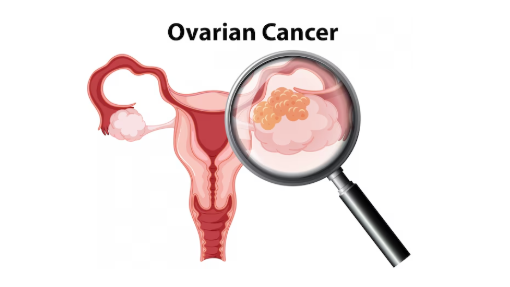By : Geraldus Sigap

Ovarian cancer is often referred to as a “silent killer” because its symptoms are subtle and frequently only detected at an advanced stage. However, with awareness and appropriate screening, the chances of early detection can significantly improve, one of which is through hysteroscopy and colposcopy, two important procedures in evaluating the female reproductive system.
What Is Ovarian Cancer?
Ovarian cancer is the abnormal growth of cells that begins in the tissues of the ovary (ovaries). If not diagnosed early, the cancer can quickly spread to nearby organs.
It is the leading cause of death among gynecological cancers in women. Unfortunately, many patients are diagnosed at an advanced stage due to the non-specific nature of early symptoms.
Commonly Overlooked Symptoms of Ovarian Cancer
Here are several symptoms to watch for, especially if they persist:
- Bloating or a feeling of fullness in the abdomen
- Pelvic or lower abdominal pain
- Frequent urination
- Loss of appetite or feeling full quickly
- Changes in menstrual cycles
- Unexplained weight loss
If you experience these symptoms for more than two weeks, consult a doctor without delay.
Diagnostic Support for Early Detection
Early detection of ovarian cancer involves physical and supporting examinations, especially if suspicious symptoms or family history are present.
Common tests include:
- Transvaginal Ultrasound: To view the ovaries and detect any suspicious masses or cysts.
- Tumor Marker Test (CA-125): Measures levels of a protein often elevated in ovarian cancer patients, although it is not a standalone diagnostic tool.
- CT Scan or MRI: Used to assess the extent of cancer spread within the abdomen or to other organs.
The Role of Hysteroscopy and Colposcopy in Further Evaluation
Although ovarian cancer originates in the ovaries, doctors also examine other reproductive organs to rule out associated abnormalities.
Hysteroscopy: A procedure where a small optical instrument is inserted through the vagina into the uterus to directly view the uterine lining. It helps detect uterine abnormalities that may be related to or mimic ovarian cancer symptoms, such as abnormal bleeding.
Colposcopy: A visual examination of the cervix using magnification. This procedure is helpful if cervical abnormalities are suspected or as part of a comprehensive reproductive system evaluation.
Both procedures are diagnostic tools that help determine whether further actions, such as biopsy or surgery, are needed.
Who Should Be Cautious?
Several risk factors can increase the likelihood of developing ovarian cancer, including:
- Family history of ovarian or breast cancer
- Age over 50
- Never having been pregnant
- Endometriosis
- Long-term use of hormone therapy
- BRCA1 or BRCA2 gene mutations
When Should You See a Doctor?
Consult a gynecologist immediately if you experience any suspicious symptoms, especially if you have risk factors. Women are advised to become more vigilant about ovarian cancer starting at age 40, particularly if there is a family history of ovarian or breast cancer. Regular check-ups with a gynecologist, annual transvaginal ultrasounds (for high-risk individuals), and open discussions about any symptoms are strongly recommended after entering perimenopause or postmenopause.
Early screening significantly increases the chances of detecting cancer before it spreads. The team of gynecologic and oncology specialists at RS Abdi Waluyo is ready to assist you in the evaluation and treatment of gynecologic conditions, including ovarian cancer. Contact us at 021-3144989 or visit our Gynecologic Oncology Clinic for more information.
FAQ
What is ovarian cancer?
Ovarian cancer is a type of cancer that originates in the ovaries. It often develops silently and is typically detected at a later stage.
What are the early symptoms of ovarian cancer?
Symptoms include persistent bloating, pelvic or abdominal pain, frequent urination, feeling full quickly, and menstrual irregularities.
Who is at risk for ovarian cancer?
Women over 50, those who have never been pregnant, have a family history of ovarian or breast cancer, or have BRCA1/BRCA2 gene mutations are at higher risk.
Can hysteroscopy and colposcopy diagnose ovarian cancer?
Not directly. These procedures help rule out other uterine and cervical conditions with similar symptoms as part of a comprehensive evaluation.
What are the most accurate tests for early detection of ovarian cancer?
Transvaginal ultrasound, CA-125 testing, and CT scans are commonly used together. A definitive diagnosis is made through biopsy.
When should I see a doctor?
If you experience suspicious symptoms for more than two weeks—especially with risk factors, consult a gynecologist as soon as possible.
Resource :
- Liberto JM, Chen S-Y, Shih I-M, Wang T-H, Wang T-L, Pisanic TR. Current and Emerging Methods for Ovarian Cancer Screening and Diagnostics: A Comprehensive Review. Cancers 2022;14(12):2885.
- Gizzo S, Noventa M, Quaranta M, et al. A novel hysteroscopic approach for ovarian cancer screening/early diagnosis. Oncol Lett 2017;13(2):549–553.
